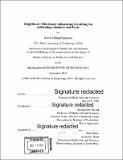| dc.contributor.advisor | Rosalind W. Picard. | en_US |
| dc.contributor.author | Ghandeharioun, Asma | en_US |
| dc.contributor.other | Program in Media Arts and Sciences (Massachusetts Institute of Technology) | en_US |
| dc.date.accessioned | 2017-03-20T19:40:32Z | |
| dc.date.available | 2017-03-20T19:40:32Z | |
| dc.date.copyright | 2016 | en_US |
| dc.date.issued | 2016 | en_US |
| dc.identifier.uri | http://hdl.handle.net/1721.1/107569 | |
| dc.description | Thesis: S.M., Massachusetts Institute of Technology, School of Architecture and Planning, Program in Media Arts and Sciences, 2016. | en_US |
| dc.description | Cataloged from PDF version of thesis. | en_US |
| dc.description | Includes bibliographical references (pages 159-167). | en_US |
| dc.description.abstract | There are many health-related risks associated with chronic stress. One approach for addressing this issue comes from strengthening inside self-regulation abilities rather than eliminating outside sources of stress. However, technology has not been explored to its full potential for delivering calming interventions. While many of the persuasive technologies developed for fostering behavior change focus on cognitive processes, little attention has been given to influencing behavior through automatic processes of the brain. Considering the bidirectional relationship between psycho-physiological signals and self-reported emotional states, manipulating the physiological signals that a human being has voluntary control over is promising for achieving a desired emotional state. In this work, we focus on respiration due to the fact that it is both a voluntary and involuntary response of the body. It is a good indicator of stress, but can also be manipulated to induce calmness. This thesis introduces BrightBeat: a set of seamless visual, auditory, and tactile interventions that mimic a calming breathing oscillation with the aim of influencing physiological syncing and consequently bringing a sense of focus and calmness. These interventions are designed to run easily on commonplace personal electronic devices, respect the user's privacy, and to not require constant focus or attention in order to be effective. We have designed BrightBeat interventions iteratively and have examined both objective and subjective measures of impact through a series of studies with N=54 users in total. From an objective perspective, BrightBeat interventions significantly influenced calmer (slower) breathing and had a lasting influence. From a subjective perspective, considering the individual differences, these interventions have been shown to improve self-reported calmness and focus. Also, participants reported high preference for using them in the future. This work has been supported by the Robert Wood Johnson Foundation and the MIT Media Lab Consortium. | en_US |
| dc.description.statementofresponsibility | by Asma Ghandeharioun. | en_US |
| dc.format.extent | 167 pages | en_US |
| dc.language.iso | eng | en_US |
| dc.publisher | Massachusetts Institute of Technology | en_US |
| dc.rights | MIT theses are protected by copyright. They may be viewed, downloaded, or printed from this source but further reproduction or distribution in any format is prohibited without written permission. | en_US |
| dc.rights.uri | http://dspace.mit.edu/handle/1721.1/7582 | en_US |
| dc.subject | Program in Media Arts and Sciences () | en_US |
| dc.title | BrightBeat : effortlessly influencing breathing for cultivating calmness and focus | en_US |
| dc.title.alternative | Bright Beat : effortlessly influencing breathing for cultivating calmness and focus | en_US |
| dc.title.alternative | Effortlessly influencing breathing for cultivating calmness and focus | en_US |
| dc.type | Thesis | en_US |
| dc.description.degree | S.M. | en_US |
| dc.contributor.department | Program in Media Arts and Sciences (Massachusetts Institute of Technology) | en_US |
| dc.identifier.oclc | 974642439 | en_US |

